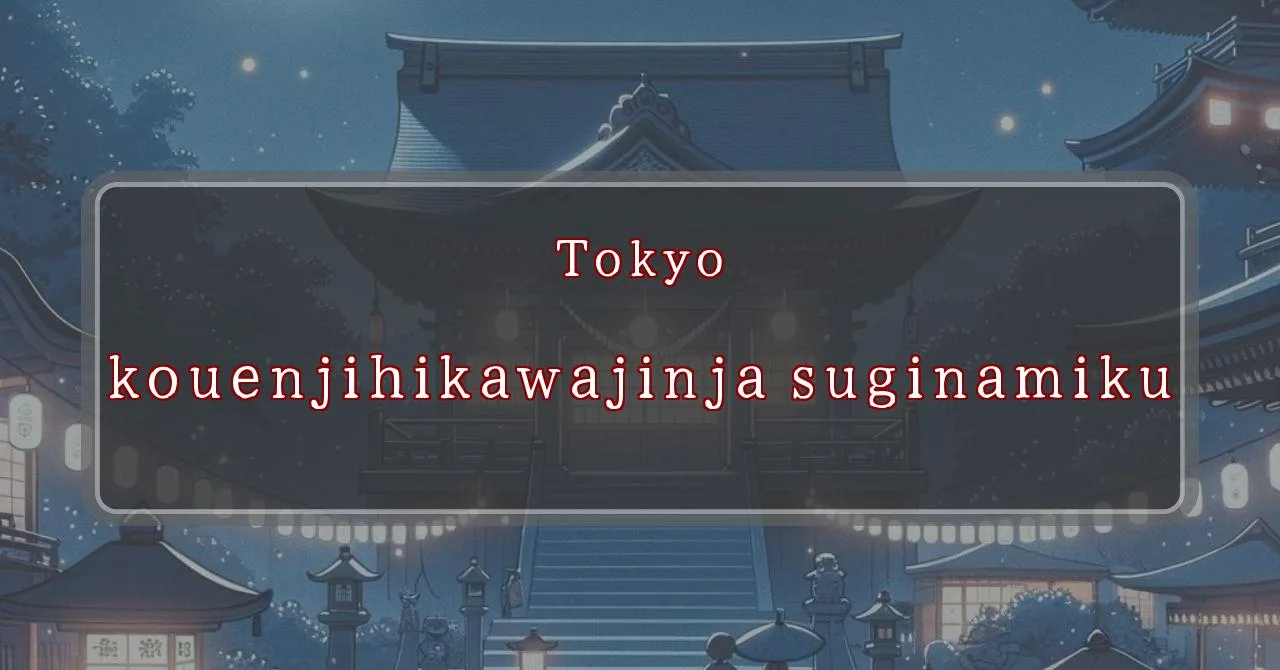Enchanting shrine festival in Tokyo, a fusion of tradition and modern charm
Shinto shrine located in Koenji Minami, Suginami Ward, Tokyo, Japan.
- Address: 4-44-19 Koenji Minami, Suginami-ku, Tokyo 166-0003
- Phone Number: 03-3314-4147
- Access: 1-minute walk from JR Chuo Line/Sobu Line Koenji Station South Exit
- Festival Days: August 24th (Sat), August 25th (Sun), 2024
Main Events and Attractions of the Festival
The Koenji Hikawa Shrine Festival is a lively and colorful event that attracts many visitors each year. The festival features a variety of events and attractions, including:
Mikoshi Procession
One of the main highlights of the festival is the mikoshi procession. A mikoshi is a portable shrine that is carried through the streets by a team of people. The Koenji Hikawa Shrine mikoshi is a large and elaborate structure, and it is a sight to behold as it is carried through the streets. The procession is accompanied by music and dancing, and it is a great opportunity to experience the vibrant atmosphere of the festival.
Bon Odori Dance
Another popular attraction at the festival is the bon odori dance. Bon odori is a traditional Japanese folk dance that is performed during the Obon festival, which is a time to honor the spirits of the dead. The bon odori dance is a lively and energetic dance, and it is a great way to get involved in the festival and experience Japanese culture.
Food Stalls
No Japanese festival would be complete without food stalls, and the Koenji Hikawa Shrine Festival is no exception. There will be a variety of food stalls selling everything from traditional Japanese dishes to international cuisine. Be sure to try some of the local specialties, such as yakitori (grilled chicken skewers) and takoyaki (octopus balls).
Games and Activities
There will also be a variety of games and activities for children and adults alike. These include traditional Japanese games such as ring toss and goldfish scooping, as well as more modern games such as face painting and balloon animals. There is something for everyone at the Koenji Hikawa Shrine Festival.
Blessings and Deities
The Koenji Hikawa Shrine is dedicated to the deity Susanoo-no-Mikoto, the god of storms, seas, and agriculture. He is also known as the god of protection and is said to bring good luck and fortune to those who worship him. Visitors to the shrine can pray for success in various aspects of their lives, including health, wealth, and relationships.
Origin and History
The Koenji Hikawa Shrine was founded in the early 17th century by a samurai named Murata Heizaemon. He was a retainer of the local lord, and he built the shrine as a place to worship Susanoo-no-Mikoto and pray for the safety of his family and clan. The shrine was originally located in a different part of Koenji, but it was moved to its current location in 1916.
Tips and Notes for Visitors
Here are some tips and notes for visitors to the Koenji Hikawa Shrine:
- The shrine is open every day from 9:00 AM to 5:00 PM.
- Admission is free.
- There is a small parking lot available for visitors.
- The shrine is a popular spot for weddings and other ceremonies, so it is best to avoid visiting during these times if you are looking for a quiet and peaceful experience.
- There are several restaurants and cafes in the area around the shrine, so you can easily grab a bite to eat before or after your visit.
Parking Information
There is a small parking lot available for visitors to the Koenji Hikawa Shrine. The parking lot is located on the south side of the shrine, and it can accommodate about 10 cars. Parking is free of charge.
Popular Stalls and Food Carts in Recent Years
| Type of Stall | Description |
|---|---|
| Takoyaki | A staple at Japanese festivals. Characterized by a crispy outside and a creamy inside. |
| Jaga Butter | A simple yet popular snack of hot potatoes lavishly topped with melted butter. |
| Baby Castella | Small castella cakes, sweet and fluffy treats enjoyed by children and adults alike. |
| Grilled Ayu with Salt | Fresh ayu fish grilled whole with salt, a savory taste of Japanese summer. |
| Shaapin | A unique gourmet item influenced by foreign cuisine, with a chewy skin wrapping the filling. |
| Okonomiyaki | A Japanese grilled dish where you often choose your own ingredients for a personalized flavor. |
| Cotton Candy | A fluffy, sweet snack that’s extremely popular with children. |
| Chocolate Banana | A banana coated in chocolate, a fun and visually appealing dessert. |
| Kushiyaki | Various types of ingredients skewered and grilled, an easy-to-enjoy snack. |
| Yakisoba | Fried noodles mixed with a special sauce, a fast food favorite in Japan. |



